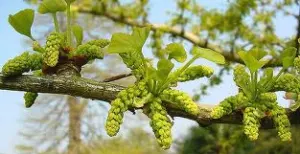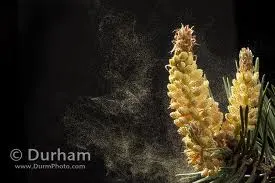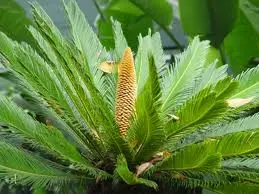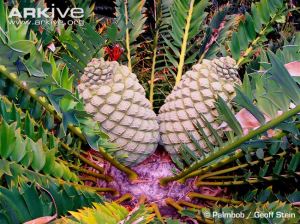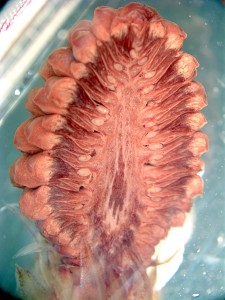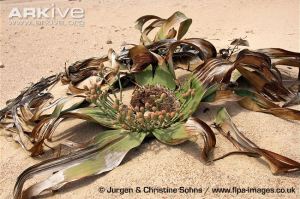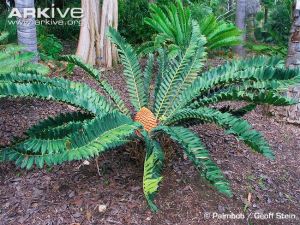Characteristics of Gymnosperms
- woody plants that have naked seeds
- seeds contain nutrients, a protective seed coat and the embryo
- the seeds are not encased in flesh fruit
- have true roots and vascular tissue
- have pollen
- pollen is a structure that carries the sperm cells (and the male gametophyte)
- Many produce seeds protected by cones, but not encased in tissue.
- Gymnospers produce male and female cones.
- Male cones are smaller and produce pollen that carries sperm cells. Pollen is transferred between plants using the wind.
- Female comes are large and woody. They house the egg cells and the developing seeds
- These plants DO NOT have spores.
- Includes 4 phyla Conifera, Cycadophyta, Ginkgophyta, and Gnetophyta.
Gymnosperm Reproduction
Gymnosperms are sporophyte dominant. This means that the largest, longest lived stage is the diploid sporophyte. The gametophyte stage is highly reduced in gymnosperms.
We will look at the pine tree life cycle as an example of gymnosperm reproduction.

Gymnosperms have staminate (male) cones and ovulate (female) cones. Pollen is made in the staminate cones. The pollen grains contain the male microgametophyte. In pine trees pollen is dispersed by the wind and travels to the ovulate cone. Once the pollen lands it produces a pollen tube that grows into the archegonium where the egg cell is located. The archegonium and the female megagametophyte are in the ovule. The pollen tube deposites the sperm cells in the archegonium and fertilization occurs. The embryo develops in the ovulate cone and a seed is formed from the mature ovule. Seeds contain nutrients that will feed the embryo as it grows and a protective coat. Seeds contain the diplod embryo and will grow into the mature sporophyte.
Examples of Male Cones
– Male cones are smaller than female cones and produce pollen (a structure that carries the sperm cells).
Male cones produce pollen.
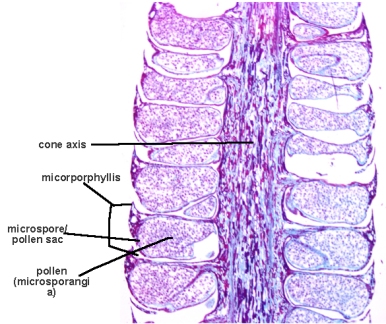
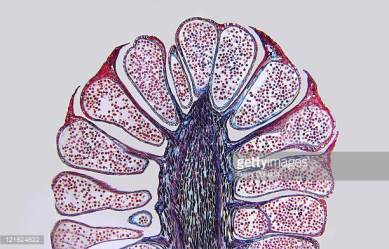
Above are pictures of male staminate cones under a microscope. The microspoes or pollen sacs hold the microsporangia (pollen grains).
Examples of Female Cones
– Female cones are larger and produce the ovule (which produces the egg cells and develop into the seeds after fertilization).
Gymnosperm naked seeds:
Seeds in a cone sit in protected nooks, but they are not surrounded by tissue. It is only in the Angiosperms that the seeds are encased in fleshy tissue called fruit.
Female ovulate cones produce the egg cells which will develop into seeds.
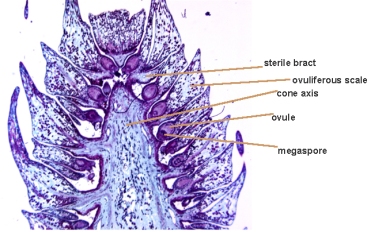
The scales are protective structures that prevent the seeds from being damaged during development.
Gymnosperm Diversity:
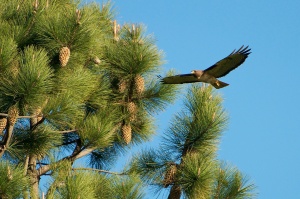
Pine tree- Coniferophyta: By Don DeBold from San Jose, CA, USA (Hawk Flying by Pine Tree) [CC BY 2.0 (http://creativecommons.org/licenses/by/2.0)%5D, via Wikimedia CommonsBy Don DeBold from San Jose, CA, USA (Hawk Flying by Pine Tree) [CC BY 2.0 (http://creativecommons.org/licenses/by/2.0)%5D, via Wikimedia Commons
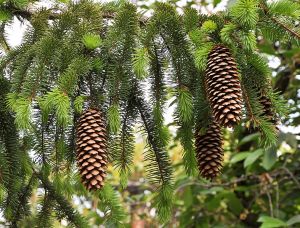
Spruce cones- Coniferophyta: Plamen Agov • studiolemontree.com [CC BY-SA 3.0 (http://creativecommons.org/licenses/by-sa/3.0)%5D, via Wikimedia Commons

